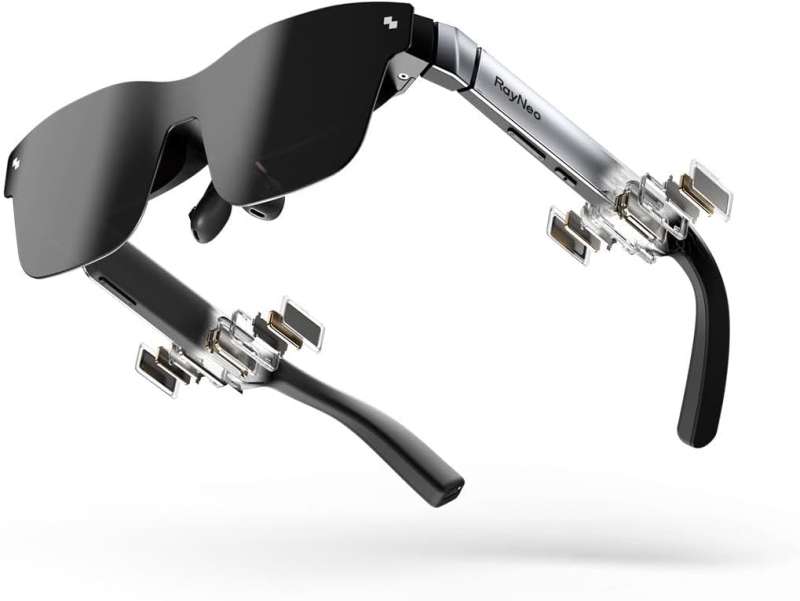
NEWS – The smart glasses market is at the cusp of a technological revolution, with RayNeo, Xreal, and Viture leading the charge in augmented reality (AR) and extended reality (XR) technology. This article takes a look at the unique features, display quality, and overall user experience of these three brands, with a special focus on Rayneo’s frequency offset and standout product highlights.
RayNeo, an innovation-led subsidiary incubated by TCL Electronics, is committed to advancing augmented reality technology in consumer electronics. Known for integrating cutting-edge AR hardware and software, RayNeo crafts products that blend functionality with style, positioning itself as a key player in the AR market.
Frequency Offset and Display Technology
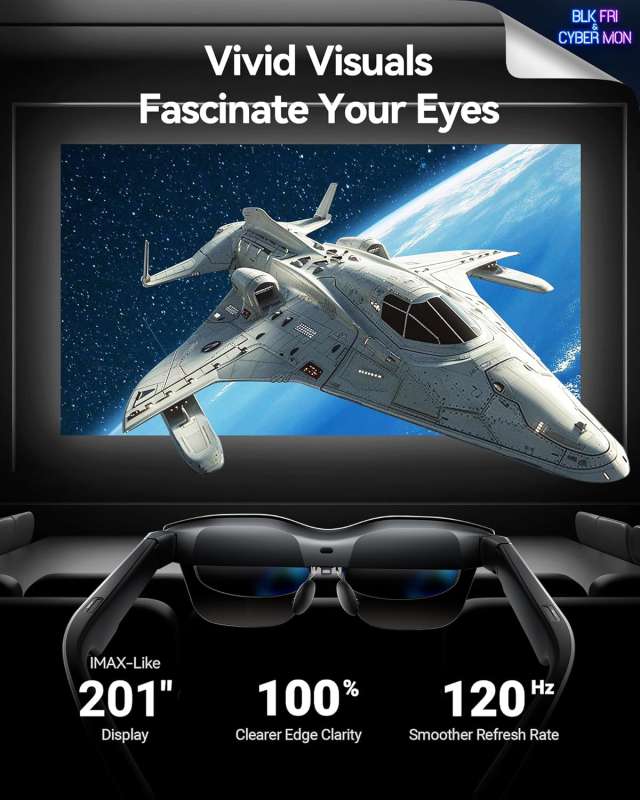
RayNeo’s smart glasses feature a high transparency rate of over 85%, which is a significant achievement in the industry. This high transparency allows users to maintain a natural field of view while benefiting from the AR overlays. The RayNeo X2, in particular, sets itself apart with an advanced Micro-LED optical waveguide display, offering a remarkable 1,000 nits of brightness and an ultra-high contrast ratio of 100,000:1. This makes the X2’s visuals far superior for outdoor use, as it maintains clarity and vibrancy even in direct sunlight.
Audio Experience
When comparing audio capabilities, RayNeo has tailored the sound experience in each model to match their intended usage. The Air 2 smart glasses feature Whisper Mode 2.0, integrating phase cancellation technology for clear sound without disrupting nearby listeners. The Air 2s XR enhances this experience with a Push-Push Quad-Speaker design, significantly amplifying audio quality, and achieving a 400% boost in sound clarity and range compared to standard setups.
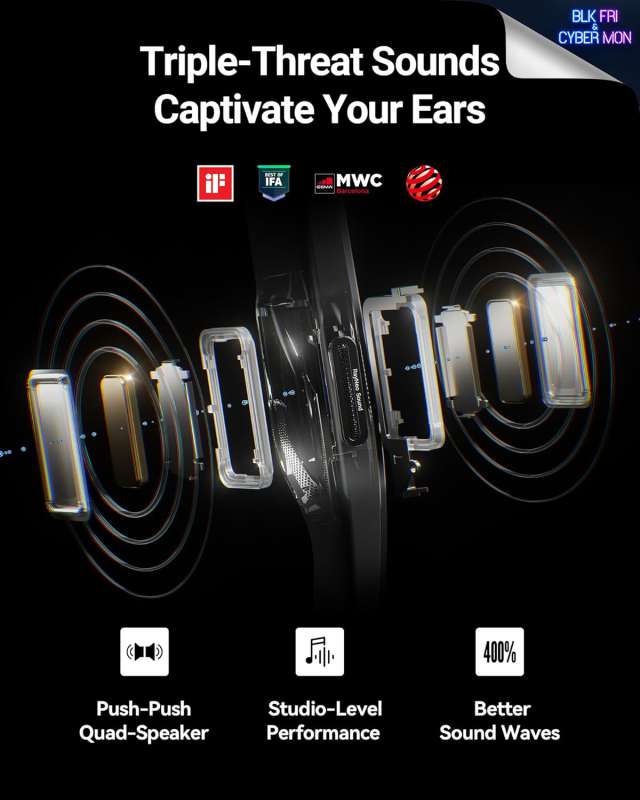
Ergonomics and Comfort
All three RayNeo smart glasses models emphasize lightweight and ergonomic design, but they differ slightly in fit and wearability. The Air 2 is the lightest at 76 grams, making it ideal for prolonged use. Its Face Comfort 2.0 system allows nine points of adjustment, giving it a customizable fit that accommodates a variety of facial structures.
Compatibility and Use Cases
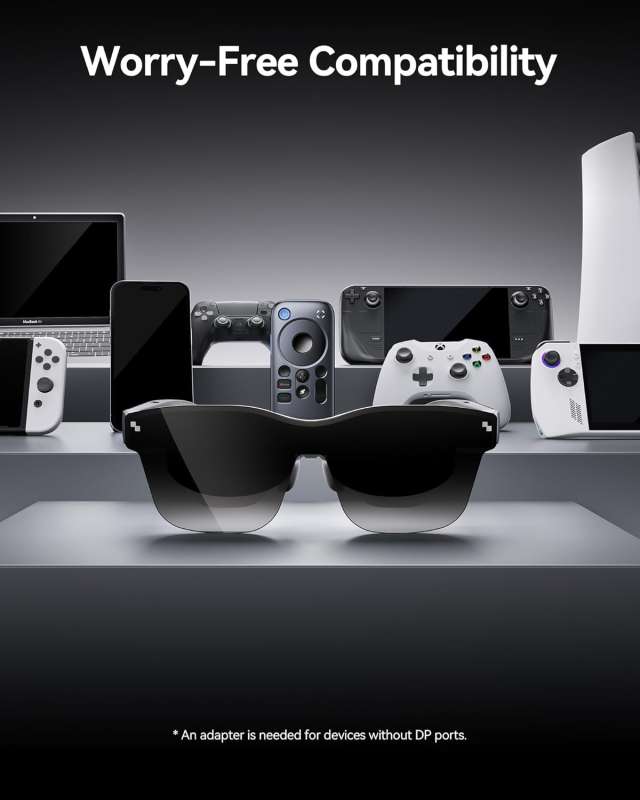
In terms of compatibility, the Air 2 and Air 2s XR support various devices including iPhone, Android, gaming consoles, and computers. The X2 goes beyond this with integrated smart features powered by Qualcomm’s Snapdragon XR2 platform, enabling AR navigation, real-time language translation, and gesture recognition.
RayNeo‘s smart glasses offer a range of options catering to different user needs. For those who value outdoor usability and a natural field of view, the RayNeo X2 stands out with its high transparency rate and advanced Micro-LED display, providing 1,000 nits of brightness and an ultra-high contrast ratio, making it ideal for maintaining clarity even in direct sunlight. Audiophiles and users seeking a personalized listening experience will appreciate the RayNeo Air 2s XR, which boasts a Push-Push Quad-Speaker design that significantly amplifies audio quality, offering a 400% increase in sound clarity and range. Lastly, for comfort and lightweight design, the RayNeo Air 2 is the lightest model at 76 grams and features a customizable Face Comfort 2.0 system, making it perfect for prolonged use and accommodating various facial structures. These features make RayNeo products a compelling choice for consumers looking for advanced augmented reality technology in smart glasses.
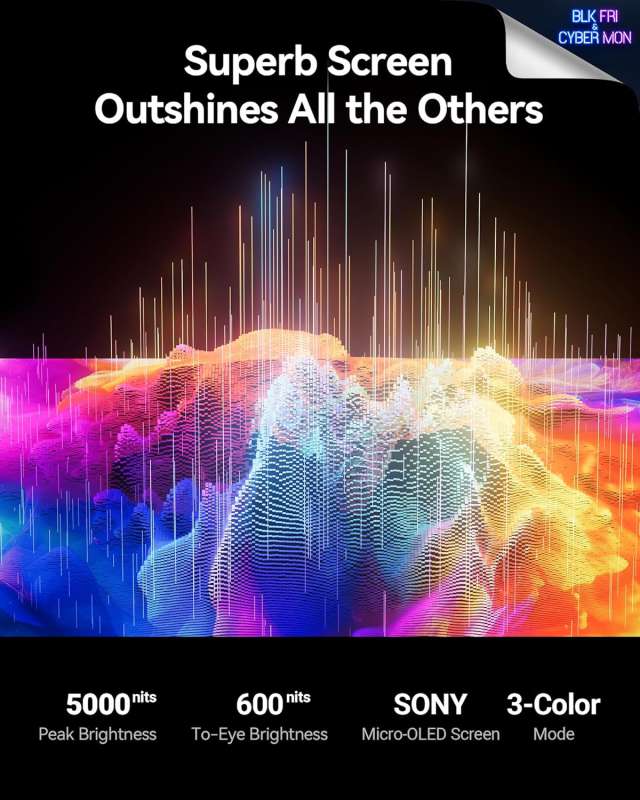
Xreal’s smart glasses, such as the Xreal Air, are known for their impressive display quality and user-friendly design. The Xreal Air 2 Pro, for instance, includes an ‘electrically tunable’ feature, which allows the lenses to change color and adjust transparency, providing a more immersive experience. This feature is particularly useful in varying lighting conditions, ensuring that the display remains clear and visible. Viture has gained significant recognition for its VITURE Pro XR glasses, which have been praised by top digital review media and have achieved high sales figures in North America. The VITURE Pro stands out with its innovative use of Sony Micro-OLED light machines, which contribute to its high performance and user satisfaction. Viture’s success is also attributed to its comprehensive ecosystem of accessories, which enhances the functionality and versatility of their smart glasses. For example, the VITURE mobile dock provides additional power and connectivity options, making it an essential accessory for users on the go.
When comparing RayNeo, Xreal, and Viture, it’s clear that each brand brings unique strengths to the table. Rayneo’s focus on frequency offset and high-transparency displays makes it a strong contender for users seeking the best in signal clarity and visual experience. Xreal’s emphasis on display technology and user comfort positions it well for those who prioritize display quality and wearability. Viture, with its robust ecosystem and high-performance hardware, appeals to users who value a comprehensive package and versatile accessory options.
The global smart glasses market is expected to recover positive growth in 2024, with shipments expected to increase by 44.2% to 9.7 million units, mainly due to the release of new head-mounted devices like Apple Vision Pro. The market is also expected to grow further with the increase in consumer application scenarios.
The smart glasses market is poised for significant growth, and brands like RayNeo, Xreal, and Viture are at the forefront of this technological revolution. As these companies continue to innovate and refine their products, consumers can look forward to even more advanced and immersive AR experiences. RayNeo’s focus on frequency offset and display technology, in particular, sets a high standard for performance and quality, making it a brand to watch in the world of smart glasses. Rayneo Air 2s AR Glasses is a great gift idea for Christmas, many people would love to order them as a gift. With the integration of AI and the expansion of application scenarios, the future of smart glasses is not just about display technology but also about enhancing daily life with intelligent, context-aware interactions.

